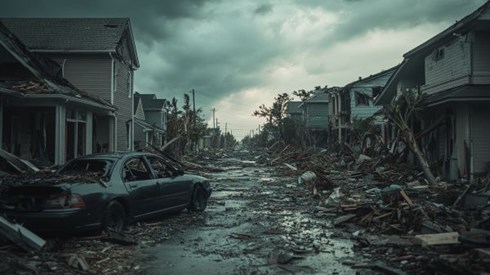Swiss Re: Natural Catastrophe Insured Losses Projected to Reach USD 145 Billion in 2025

May 15, 2025

According to Swiss Re's latest sigma report, Natural catastrophes: insured losses on trend to $145 billion in 2025, global insured losses from natural catastrophes totaled $137 billion in 2024. The report attributes the largest share of these losses to Hurricanes Helene and Milton, severe convective storms (SCS) in the United States, major urban flooding worldwide, and record-breaking insured catastrophe losses in Canada.
Per the report, economic losses from disaster events in 2024 reached $318 billion, with only 43 percent of these losses covered by insurance. The remaining 57 percent—equal to $181 billion—constitutes the global protection gap, highlighting continued underinsurance in many regions.
According to Swiss Re, insured losses from natural catastrophes have been growing at an average annual rate of 5–7 percent in real terms. If this trend continues, global insured losses could approach $145 billion in 2025. In early 2025, wildfires in Los Angeles contributed an estimated $40 billion in insured losses, reinforcing the trend that secondary perils remain a key loss driver.
Swiss Re said that while secondary perils—especially SCS—were the primary contributors to insured losses in 2024, primary perils such as tropical cyclones and earthquakes still pose the highest potential for extreme loss years. The report highlights five "peak loss" years in the past 30 years where annual insured losses significantly exceeded trend levels, including 2017, when Hurricanes Harvey, Irma, and Maria caused losses 111 percent above the expected trend.
According to the report, when losses align with trend expectations, primary insurers typically cover most property claims. However, in years where losses significantly exceed the trend, reinsurers play a critical role by absorbing more than half of the excess losses. This underscores the importance of reinsurance during catastrophic loss events.
Swiss Re estimates there is a 1-in-10 probability that global insured losses could reach $300 billion in 2025, representing the next possible peak year. This projection is based on the company's suite of catastrophe models and data on market exposures. Swiss Re noted that if a hurricane similar to Andrew were to follow the same path today, insured losses could be nearly 3 times higher than the $35 billion incurred in 1992. Meanwhile, a modern recurrence of Hurricane Katrina would still result in approximately $100 billion in insured losses, despite improved flood defenses and population decline in the impacted region.
Per Swiss Re, the global reinsurance market remains well capitalized to handle such peak loss scenarios. Traditional reinsurance capital stands at approximately $500 billion, while alternative capital—such as that provided by the catastrophe bond market—adds another estimated $50 billion in capacity. Jérôme Haegeli, Swiss Re's group chief economist, emphasized that a well-capitalized reinsurance sector is essential to helping communities and economies recover from large-scale disasters and that capital must keep pace with rising risk.
According to Swiss Re, the United States accounted for nearly 80 percent of global insured natural catastrophe losses in 2024. States including Florida, Texas, California, Louisiana, and Colorado made up about half of all US natural catastrophe losses. Florida experienced high hurricane-related losses, with average household premiums roughly double the national average. In California, premium costs were concentrated in regions with the greatest wildfire exposure.
Swiss Re also highlighted the importance of mitigation measures in reducing insurance costs and protecting communities. The report notes that flood protection infrastructure—such as levees and floodgates—can be up to 10 times more cost-effective than post-disaster rebuilding.
While reinsurers remain well positioned to absorb major losses, Swiss Re warns that maintaining this resilience requires sustained growth in capital and continued investment in long-term risk management strategies.
May 15, 2025
